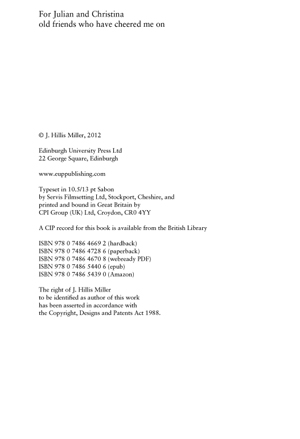Exercise 1: A Book
The next few exercises allow you to put into practice some of the rules discussed on the preceding page. These exercises begin relatively easily, and get progressively harder. Remember you'll always be able to find a model footnote at the base of the page to check your own work against.
Exercise


For this exercise, imagine you wanted to cite page 17 of this book. And remember to use * * to indicate italicisation.
Correct footnote:
Your footnote above should look like this:J. Hillis Miller, *Reading for our Time: 'Adam Bede' and 'Middlemarch' Revisited* (Edinburgh: Edinburgh University Press, 2012), p. 17.In your own work, the same footnote would look like this:
J. Hillis Miller, Reading for our Time: 'Adam Bede' and 'Middlemarch' Revisited (Edinburgh: Edinburgh University Press, 2012), p. 17.
Comment:
This exercise demonstrates how to present titles of other works which appear within an italicized title. Some writers distinguish such titles by unitalicising them: Reading for our Time: Adam Bede and Middlemarch Revisited. However, the MHRA recommends simply enclosing the titles in single quotation marks, as in the example above.
The title-page pictured above capitalises 'Our', but this appears uncapitalised in our correct footnote. The MHRA states that principal words in a title should be capitalised, so: nouns, pronouns (except the relative 'that'), adjectives, verbs, adverbs, and subordinating conjunctions. Going uncapitalised should be: articles, possessive determiners ('my', 'our', etc.), prepositions, and co-ordinating conjunctions ('and', 'but', 'or', and 'nor'). So to conform to the MHRA guidelines, 'our' should not be capitalised here.

